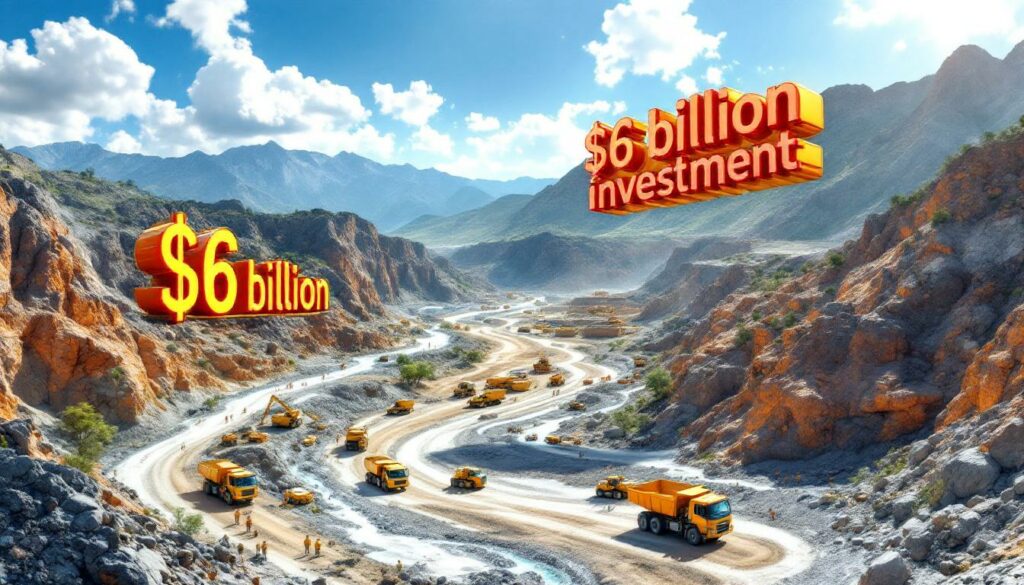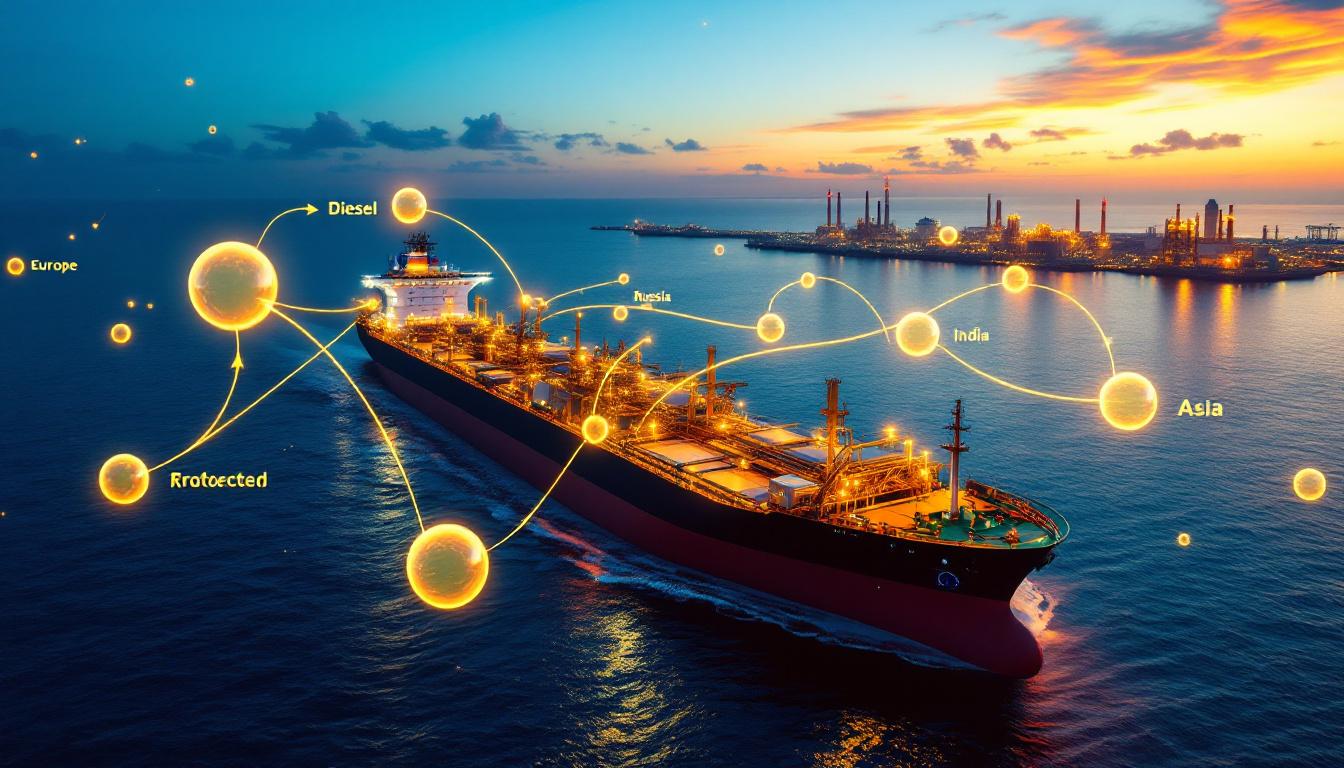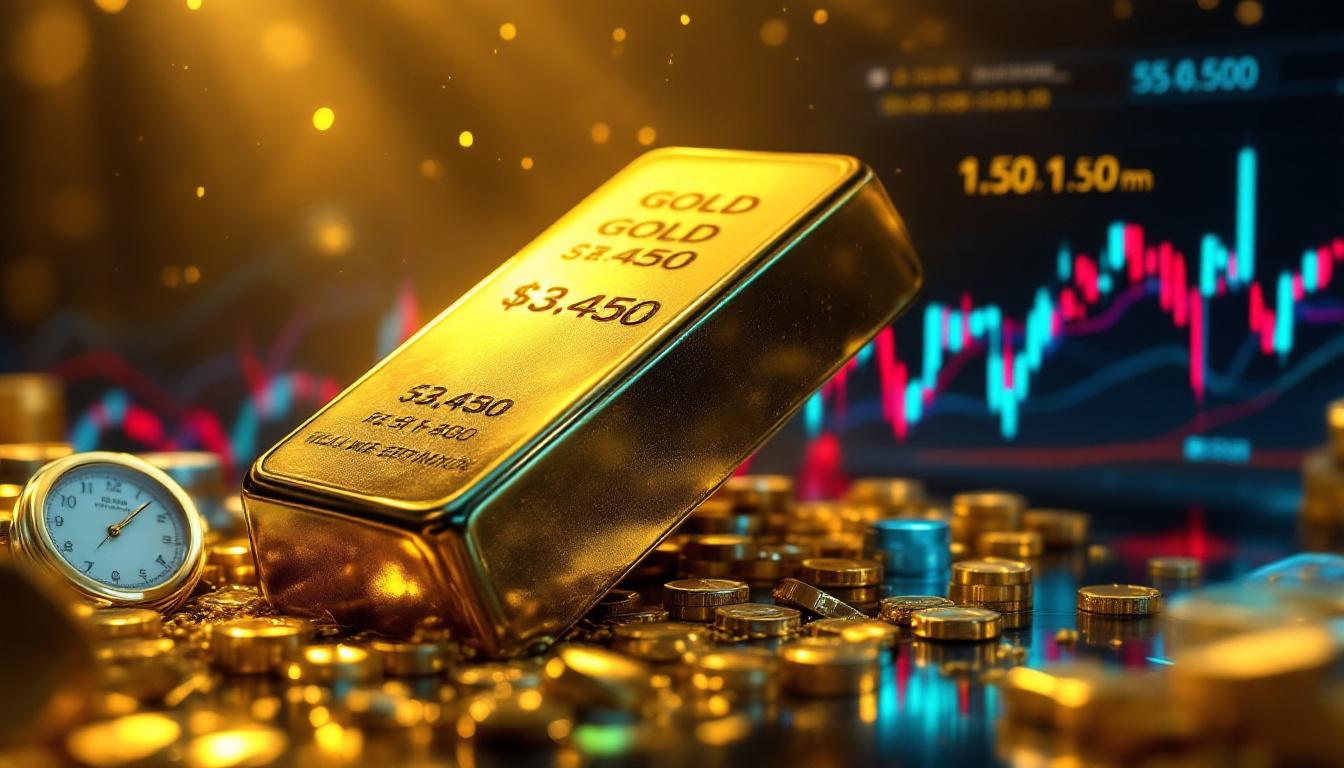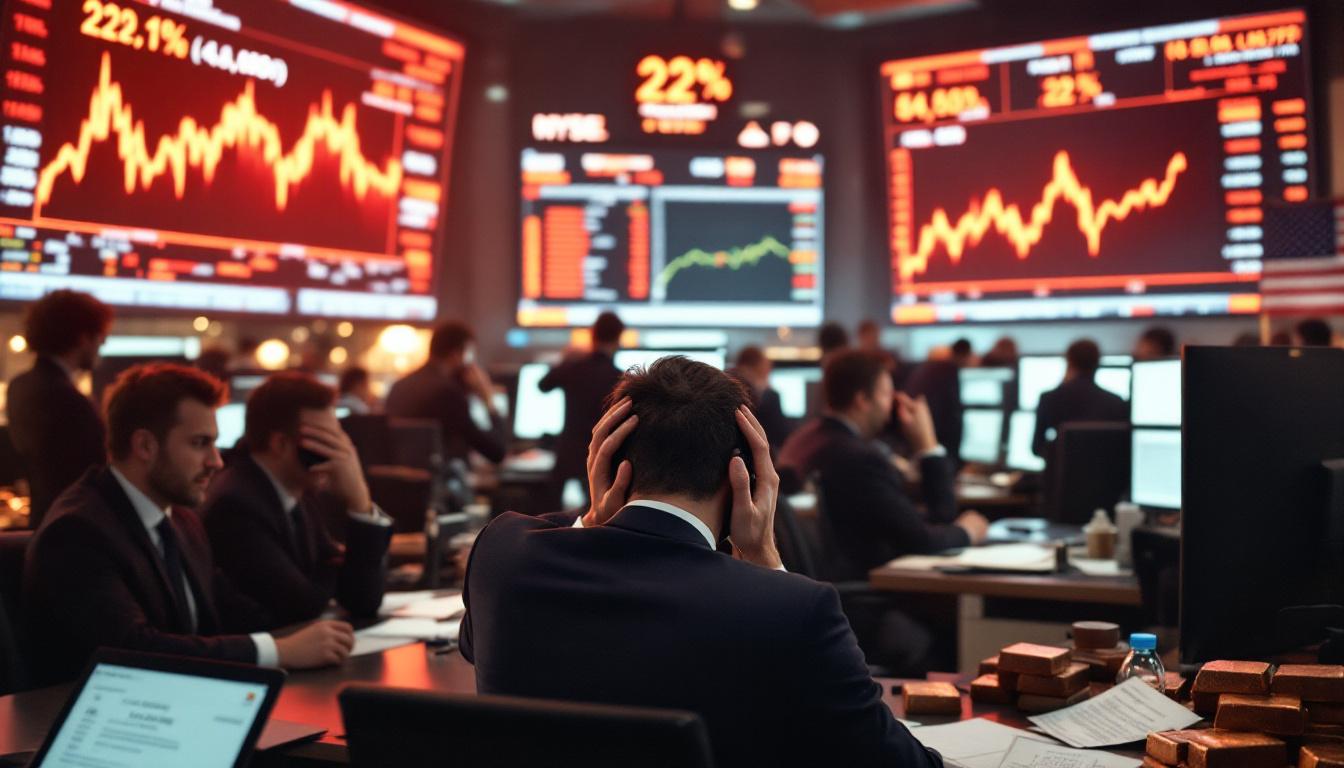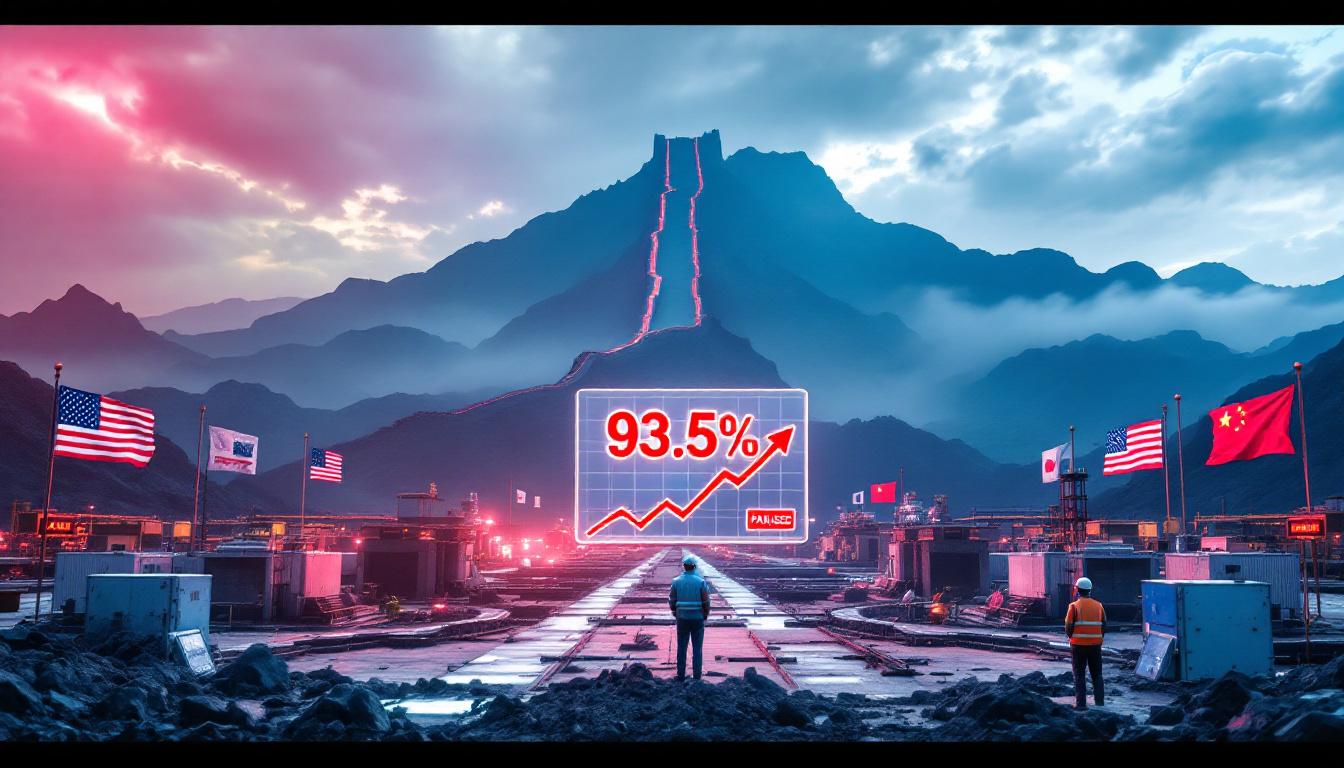Peru's Mining Investment Boom: Examining the $6 Billion Project Pipeline
Peru, the world's third-largest copper producer, stands at a critical juncture with its ambitious mining sector expansion plans. The government is currently evaluating 134 new mining projects potentially worth $6 billion in investments, representing one of the most significant opportunities for economic growth in the region. This strategic initiative comes as Peru seeks to strengthen its position in global mineral markets while addressing longstanding challenges in its informal mining sector.
Key Investment Figures at a Glance
| Investment Category | Amount | Timeline |
|---|---|---|
| Exploration & exploitation projects under evaluation | $6 billion | Currently being assessed |
| Expected formal small-scale mining sector sales | $5+ billion | By end of 2025 |
| Formal projects expected to begin construction | $4.7 billion | By 2026 |
What is Peru's Current Mining Investment Strategy?
Peru's mining strategy centers on a dual approach: expanding formal mining operations through major investments while simultaneously bringing informal miners into the regulated economy. According to President Dina Boluarte's recent announcements, the government is evaluating 134 mining projects worth approximately $6 billion, spanning exploration and exploitation activities across the country's mineral-rich regions.
"We're focusing on creating a sustainable mining sector that balances economic growth with environmental responsibility and social inclusion," stated President Boluarte during a July 2025 mining conference in Lima. "These investments represent not just economic opportunities but a pathway to formalization for thousands of miners currently operating outside regulatory frameworks."
The strategy also includes ambitious targets for formalizing the country's small-scale mining sector, which is expected to generate over $5 billion in annual sales by the end of 2025 once fully integrated into the formal economy.
Peru's Position in Global Mining
Peru maintains its position as the world's third-largest copper producer, behind Chile and China, producing approximately 2.2 million metric tons annually. This strategic position in the copper market is particularly significant as global demand continues to rise due to:
- Expanding renewable energy infrastructure requiring substantial copper inputs
- Electric vehicle production growth creating unprecedented demand for copper wiring
- Digital infrastructure development demanding high-quality conductive materials
- Green technology transitions requiring reliable copper supply chains
Beyond copper, Peru also ranks among the top producers of gold, silver, zinc, and lead, with significant reserves of emerging critical minerals energy transition essential for the global energy transition.
How Will These Projects Transform Peru's Mining Landscape?
The potential authorization of 134 mining projects represents a transformative opportunity for Peru's economy and mining sector. Industry analysts project these investments could increase Peru's mining output by 15-20% within five years of implementation, significantly enhancing the country's export capacity and global market position.
Economic Impact Projections
The $6 billion investment pipeline is expected to generate substantial economic benefits:
- Job creation: Estimated 40,000+ direct jobs and 120,000+ indirect employment opportunities
- Tax revenue: Projected $800 million annually in additional tax contributions at full production
- Infrastructure development: Major improvements to transportation networks, power distribution, and water management systems
- Skills development: Enhanced technical training programs and knowledge transfer initiatives
- Regional economic diversification: Support services and supply chain expansion throughout mining regions
According to mining economist Carlos Montes from the Peruvian Mining Institute: "These investments represent not just mines, but economic ecosystems that can transform entire regions. For every direct mining job, we typically see 3-4 additional jobs created in supporting industries."
Strategic Mineral Development
Peru's mining expansion strategy focuses on:
- Copper production growth: Targeting a 25% increase in copper output by 2030, with the latest copper production forecast showing significant potential for expansion
- Critical minerals diversification: Expanded exploration for lithium, cobalt, and rare earth elements
- Value-added processing: Development of concentrate processing facilities to capture additional value
- Mining technology innovation: Implementation of advanced extraction and processing technologies
What Challenges Is Peru's Mining Sector Currently Facing?
Despite ambitious development plans, Peru's mining sector confronts significant obstacles that could impact investment timelines and project success rates.
Informal Mining Conflicts
The government is currently navigating complex negotiations with informal miners who launched disruptive protests in late June 2025. These protests blocked key transportation corridors, affecting operations at major mining companies including MMG's Las Bambas copper mine and Glencore's Antapaccay operation.
"The blockades resulted in approximately $120 million in lost production over a two-week period," reported MMG in a July statement to investors. "While operations have resumed, these disruptions highlight the ongoing challenges in Peru's mining regions."
The protests erupted after the government removed over 50,000 miners from its formalization program due to compliance failures, leaving approximately 31,000 miners still participating in the initiative.
Formalization Program Controversies
The government's formalization efforts face significant challenges:
- Compliance complexities: Many small-scale miners struggle with technical and financial requirements
- December 2025 deadline: Pressure to formalize remaining 31,000 miners by year-end
- Regulatory capacity limitations: Government agencies strained to process applications and conduct inspections
- Competing economic interests: Tensions between large-scale mining companies and artisanal operations
Social scientist Dr. Elena Vásquez from Universidad Nacional Mayor de San Marcos explains: "The formalization process requires balancing legitimate concerns of small-scale miners with regulatory necessities. Many miners want to operate legally but face significant barriers to entry into the formal economy."
Social License Considerations
The expansion of mining activities faces varying levels of community acceptance:
- Water resource competition: Concerns about mining impacts on agricultural water availability
- Environmental legacy issues: Historical contamination affecting trust in new project proposals
- Benefit distribution questions: Communities demanding greater shares of mining revenues
- Cultural and land rights tensions: Indigenous communities raising concerns about sacred lands and traditional practices
How Is Peru Supporting Small-Scale Mining Operations?
President Dina Boluarte's administration is implementing targeted initiatives to support formal small-scale miners while incentivizing formalization among those operating outside regulatory frameworks.
Private Mining Fund Initiative
The government is developing a specialized financing mechanism for formal small-scale miners that includes:
- Low-interest loans for equipment upgrades and safety improvements
- Technical assistance grants for environmental compliance projects
- Cooperative development funding to support miners' associations
- Processing technology investments to improve recovery rates and reduce mercury use
"Access to capital has been the primary barrier preventing small miners from formalizing," explains Mining Minister Roberto Sánchez. "This fund addresses that gap directly, making formalization economically viable for operations that want to comply but lack resources."
The fund structure combines public funding with contributions from large-scale mining companies as part of their social responsibility programs, creating a sustainable financing mechanism.
Formalization Benefits
Miners who complete the formalization process gain significant advantages:
- Legal market access: Ability to sell minerals through regulated channels at market prices
- Technical support programs: Access to geological assistance and mining engineering expertise
- Worker protection standards: Improved safety conditions and labor rights
- Environmental management tools: Support for implementing sustainable mining practices
- Tax normalization: Reduced risk of penalties while contributing to local development
"Formalization isn't just about compliance—it's about dignity and sustainability," notes Francisco Martínez, leader of the National Association of Small-Scale Miners. "Formal miners see higher incomes, better working conditions, and the pride of operating as legitimate businesses contributing to Peru's economy."
What Economic Benefits Will These Mining Projects Deliver?
The $6 billion investment pipeline represents a significant economic catalyst for Peru, with projections indicating substantial contributions to national and regional development.
Revenue Generation Potential
Peru's mining expansion is expected to deliver:
- Export growth: Potential increase of $3-4 billion annually in mineral exports at full production
- Tax contributions: Approximately $1.2 billion in additional annual tax revenues across all levels of government
- Foreign exchange stability: Strengthened currency position through consistent export earnings
- Economic diversification opportunities: Development of mining services sector and downstream processing
- Investment attraction: Improved global perception of Peru's mining investment climate
Economic analyst Luisa Fernández from the Lima Chamber of Commerce notes: "Mining investments create ripple effects throughout Peru's economy. For every $1 billion invested in mining infrastructure, we typically see about $1.8 billion in additional economic activity generated across related sectors."
Regional Development Impacts
Mining investments deliver particularly significant benefits to Peru's often-underserved rural regions:
- Transportation infrastructure: Road improvements connecting remote communities to urban centers
- Power grid expansion: Electricity access for previously unserved communities
- Water management systems: Modern water treatment facilities benefiting entire watersheds
- Healthcare and education facilities: Company-funded social infrastructure development
- Local business growth: Supply chain opportunities for regional enterprises
Which Major Mining Companies Are Active in Peru?
Peru's mining sector features a robust mix of international and domestic companies operating across various scales and mineral commodities.
Key Corporate Players
The country's mining landscape includes several major operators:
- MMG: Operating the Las Bambas copper mine, one of the world's largest copper producers with approximately 300,000 tonnes annual production
- Glencore: Managing the Antapaccay copper operation producing around 200,000 tonnes of copper annually
- Southern Copper Corporation: Running the Toquepala and Cuajone mines with combined production exceeding 500,000 tonnes of copper yearly
- Newmont: Operating the historic Yanacocha gold mine which has produced over 38 million ounces since opening, benefiting from recent gold price record highs
- Freeport-McMoRan: Managing Cerro Verde, Peru's largest copper mine by processing capacity
- Buenaventura: Peru's largest publicly-traded precious metals company with multiple gold and silver operations
Investment Expansion Plans
Several existing operations are planning significant expansions:
- Southern Copper's Tía María project: $1.4 billion investment awaiting final permits
- Anglo American's Quellaveco mine: Ramping up to full production after recent commissioning
- Chinalco's Toromocho expansion: Increasing processing capacity by 45%
- Hudbay Minerals' Constancia operation: Developing nearby satellite deposits
Mining analyst Jorge Ramírez explains: "Many of Peru's existing mines have significant growth potential through brownfield expansions, representing lower-risk investments compared to entirely new projects. Companies with established operations understand the regulatory environment and community dynamics, giving them advantages in project execution."
How Does Peru's Mining Strategy Compare to Regional Competitors?
Peru's $6 billion investment initiative positions the country competitively within Latin America's mining landscape, though each country in the region maintains distinct advantages.
Regional Context
Peru operates within a dynamic regional mining environment:
- Chile: Maintains leadership as the world's largest copper producer with approximately 5.6 million tonnes annually
- Brazil: Dominates iron ore production with sophisticated logistics systems
- Mexico: Leads in silver output while developing significant gold operations
- Colombia: Focusing on coal and emerging gold opportunities
- Ecuador: Actively developing its mining sector with several major projects under construction
Competitive Advantages
Peru maintains several distinctive strengths in this competitive landscape:
- Geological diversity: Rich endowment across multiple commodities unlike some single-resource competitors
- Mining history: Centuries of mining experience creating deep institutional knowledge
- Pacific Ocean access: Strategic port infrastructure for efficient mineral exports to Asian markets
- Policy continuity: Generally consistent mining regulations despite political changes
- Cost structure: Competitive operating costs compared to some regional alternatives
"Peru's advantage lies in its combination of proven reserves, established infrastructure, and experienced workforce," notes mining consultant Eduardo Torres. "While Chile dominates in copper and Brazil in iron ore, Peru offers investors a more diversified mineral portfolio within a single jurisdiction."
What Are the Environmental Considerations for These Projects?
The expansion of mining activities raises important environmental questions that must be addressed for sustainable development and community acceptance.
Environmental Management Requirements
Peru's regulatory framework requires comprehensive environmental controls:
- Environmental impact assessments (EIAs): Detailed studies required before project approval
- Water management plans: Strict requirements for water use efficiency and discharge quality
- Tailings management: Engineering standards for waste containment structures
- Air quality monitoring: Continuous measurement of particulate matter and gases
- Biodiversity protection measures: Wildlife corridors and habitat preservation programs
- Closure and reclamation planning: Detailed post-mining land use planning from project inception, incorporating the latest mine reclamation innovation
Environmental engineer Carla Mendoza explains: "Modern mining in Peru operates under much stricter environmental standards than historical operations. Today's permits require comprehensive monitoring programs, transparent reporting, and financial guarantees for environmental remediation."
Sustainability Initiatives
Leading mining companies are implementing advanced sustainability practices:
- Renewable energy integration: Solar installations powering mine operations
- Water recycling systems: Closed-loop processing to minimize freshwater consumption
- Biodiversity banking: Habitat restoration initiatives exceeding regulatory requirements
- Community environmental monitoring: Participatory programs involving local stakeholders
- Climate resilience planning: Infrastructure design accounting for changing weather patterns
"The mining sector has recognized that environmental performance is not just regulatory compliance but a business imperative," states environmental policy expert José Rivera. "Companies with poor environmental practices face financing challenges, permitting delays, and community opposition that directly impact their bottom line."
What Is the Timeline for Project Approvals and Development?
The government's mining expansion vision will unfold over a multi-year horizon, with specific milestones guiding implementation.
Key Milestones
The development timeline includes several critical phases:
- 2025-2026: Ongoing evaluation and permitting for 134 projects worth $6 billion
- December 2025: Target completion date for formalizing remaining 31,000 small-scale miners
- 2026: Expected construction start for $4.7 billion in formal projects
- 2027-2028: First production from initial wave of new mines
- 2028-2030: Full production ramp-up across project portfolio
Mining projects typically require 2-4 years from construction start to commercial production, with larger operations often taking longer to reach nameplate capacity.
Approval Process Factors
Several factors influence project approval timelines:
- Environmental permitting complexity: Projects in sensitive areas face more rigorous review
- Community consultation effectiveness: Social license acquisition varies significantly by region
- Technical design optimization: Engineering studies to maximize efficiency and sustainability
- Capital availability: Financing conditions affecting investment decisions
- Infrastructure requirements: Power, water, and transportation development timelines
"The critical path for most projects isn't the mine construction itself but securing the necessary permits and social license," explains mining engineer Ricardo Vargas. "Companies that invest early in community relationships and environmental planning typically see significantly faster approval processes."
FAQs About Peru's Mining Investment Plans
What types of minerals are targeted in these new mining projects?
The 134 projects under evaluation encompass a diverse mineral portfolio. While copper remains Peru's flagship mineral with approximately 65% of investments targeting copper deposits, the project pipeline also includes:
- Gold deposits: Primarily in the northern and central Andean regions
- Zinc and lead resources: Often occurring together in polymetallic deposits
- Silver projects: Both primary silver deposits and by-product recovery operations
- Critical minerals: Emerging exploration for lithium, cobalt, rare earths, and graphite
- Industrial minerals: Limestone, phosphates, and construction materials
The diversification beyond traditional minerals reflects Peru's adaptation to evolving global demand patterns, particularly minerals essential for renewable energy technologies.
How will these investments affect local communities?
Mining investments create complex impacts on local communities that vary significantly based on project design, community characteristics, and company approaches:
Potential benefits include:
- Employment opportunities with wages typically 2-3 times local averages
- Business development through local procurement programs
- Infrastructure improvements including roads, electricity, and water systems
- Education and healthcare facility investments
- Tax revenue sharing with local and regional governments
Potential challenges include:
- Changes to traditional livelihoods and cultural practices
- Environmental concerns about water quality and quantity
- Immigration pressures as job-seekers arrive from other regions
- Socioeconomic disparities between mining and non-mining families
- Long-term economic sustainability beyond mine life
Successful projects typically implement comprehensive community development agreements established through participatory planning processes.
What measures is Peru taking to ensure environmental protection?
Peru has strengthened its environmental governance framework for mining through several mechanisms:
- Enhanced EIA requirements: More rigorous baseline studies and impact assessments
- Independent review panels: Technical experts evaluating major project applications
- Financial assurance mechanisms: Bonds and guarantees for reclamation and closure costs
- Real-time monitoring systems: Digital reporting of key environmental parameters
- Increased inspection capacity: More frequent site visits and compliance verification
- Stricter enforcement measures: Higher penalties for environmental violations
Peru's environmental standards align increasingly with international best practices, though implementation capacity varies across regions and project types.
How will the formalization of small-scale miners be achieved?
The government's formalization program includes a multi-faceted approach:
- Simplified registration process: Streamlined documentation requirements
- Technical assistance programs: Mining engineering and geological support services
- **
Ready to Spot the Next Major Mineral Discovery?
Discover how significant ASX mineral discoveries can lead to substantial returns by exploring Discovery Alert's proprietary Discovery IQ model, which transforms complex mining data into actionable insights delivered in real-time. Visit the dedicated discoveries page to see historic examples of exceptional outcomes and begin your 30-day free trial today.
